HOME | ABOUT US | MEDIA KIT | CONTACT US | INQUIRE
HOME | ABOUT US | MEDIA KIT | CONTACT US | INQUIRE
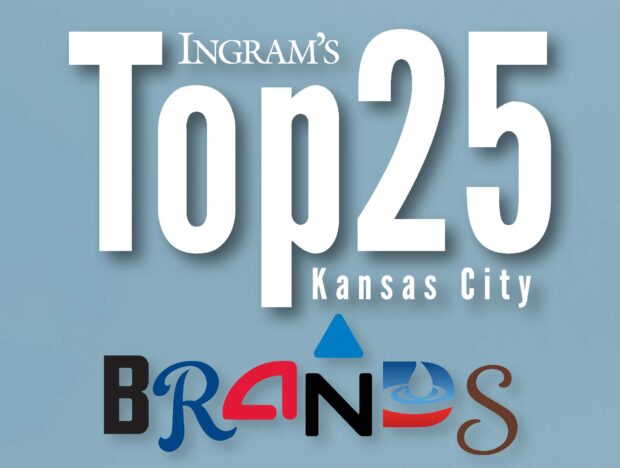
What gives a company’s brand status as being the most visible in a market?
Talk to marketing experts, and they’ll tell you: Superior product, superior service, superior follow-up. But those are just table stakes—it gets you in the game with the consumer or B2B client, but there’s a new player in the game: Technology.
In The Age of the Consumer, technology is changing the way consumers and even whole companies interact with retailers, vendors and clients. And not without significant consequences.
“The lines between marketing and customer experience are blurring more and more,” says Jim Saladin, vice president of marketing and communications for Ferrellgas in Overland Park. While technology isn’t the cure-all, Saladin says, it “is a huge part of the puzzle. Anything that moves the transaction closer to the customer and empowers them to take care of themselves to greater and lesser degrees is a strong positive.”
As we bring you our Top 25 Brands in Kansas City for 2018, we’ve asked marketing executives to assess the challenges posed by consumer-oriented technology. For some, it’s a bigger immediate concern than for others. But all are feeling the impact—or are about to. Our hope is that by connecting their experiences with your business strategy, you’ll be able to better manage that change.
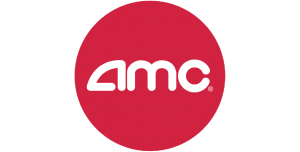
The AMC Theatres you know today is not the same company you may have known even a couple of years ago. For one, the drive to expand the range of amenities at its theaters—bearing the AMC, AMC Classic and AMC Dine-In brands—has added even more plushness (is that a word?) to the movie experience, with power recliners, bars, dining options, booming sound systems and expansive screens. On the corporate side, AMC has gone from one of the nation’s biggest theater chains to the world’s biggest, thanks to a pair of acquisitions: under the watch of CEO Adam Aaron, AMC has added to its fold both Carmike Cinemas in the United States, and the European theater chain Odeon & UCI Cinemas. For a company credited with introducing the multi-screen concept, armchair cup holders, stadium seating and the rewards program to the industry, innovation remains a key to brand-building. So AMC’s digital platform goes well beyond theater locations and showtimes to lure guests to its 380 locations (an expected 200 million of them this year) and also offers on-line trailers, ticket-purchasing, gift cards, deals on refreshments and more.

Years ago, the power in a company’s relationship with consumers sat with the brand. “Today, in the Age of the Consumer, it has shifted to the consumer as result of all the access they have to information,” says Woody Bendle, vice president of marketing operations and technology for the investment firm. “For brands, there’s no place to hide; you have to be very true to who you are, galvanized and focused on your brand story. You don’t have the ability to even modestly breach that trust.” That implies an organization-wide focus on brand promotion, he said. Specific to the firm, Bendle said, it means “taking a hard look at all our branding initiatives, communications initiatives, stepping back to make sure we have consistency and alignment across all audience groups.” Tactics will differ between types of clients—individual investors vs. institutional—but strategies will track. “But it has to be authentic,” he says. And that authenticity, in an era where doing well and doing good are dual requirements, especially for Millennial investors, is reflected in the firm’s philanthropy, with 40 percent of profits going to the Stowers Institute for Medical Research.

A German conglomerate, Bayer nonetheless resonates as a Kansas City brand by virtue of nearly 1,100 employees in two operating units of vital importance to this region’s economy: crop science and animal health. Perhaps more so than any other local brand, Bayer faces the challenge of being B2B and B2C. “Bayer is a company that’s been around more than 150 years, so clearly, a lot has changed,” says Darren Wallis, a vice president on the crop science side. “We’re mindful that our customer base is quite broad—doctors and pharmacies, consumers, farmers and retailers, as well as pet owners.” Reaching all of them increasingly means use of social media for granular contact, but an embrace of traditional media and advertising for macro messaging, he said. “In crop science, that’s interesting because we’re able to engage not only our farmer-customers, but people with any interest in farming and those who just wish to put safe, reliable and cheap food on the table.” Connecting with that diversity of consumers also helps the company with its innovation imperative, especially young consumers and potential employees. “Attracting talent to agriculture is absolutely essential to our success as a business the next five, 10 or 20 years,” Wallis said. “We’re an innovation company; we have to have talent to innovate.”

Reliable power supply. Clean water (and the ability to clean it after use). Effective communications infrastructure. If there are three bigger pillars of life in the 21st century—and their importance in turning underdeveloped countries into modern, wealth-creating economies—we’d like to know about ’em. As it happens, those are the three mainstays of the world at Black & Veatch. The Overland Park firm has long been known primarily as an engineering concern, but it is also a global force in procurement and construction, as well as design. On a global scale, the brand stands for large-scale infrastructure, generating revenues of more than $3 billion a year. In Kansas City, Black & Veatch stands for engineering excellence, of course, but it also shines for its regional impact on a couple of levels. For one, as an employer: More than 3,500 members of its global work force of over 10,000 work at the headquarters here, and many of them are engaged in volunteer work and board service for philanthropic causes, non-profits or civic-improvement efforts.
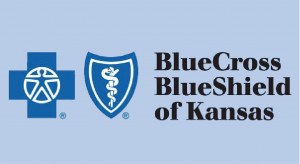
Age of the Consumer? Please. It doesn’t matter what the technology is, for Topeka-based Blue Cross Blue Shield of Kansas, the consumer has always been at the center of its thinking. Informed consumers today, says chief marketing officer Treena Mason, “expect immediate value and will go elsewhere if we are not able to provide it.” Accordingly, she says, BCBSKS strives to give the more than 906,000 consumers confidence in their choice to do business with the state’s largest insurer. “Focusing on their needs, we continue to strengthen customer experience, across all touch points, so we can deliver on our core purpose of providing piece of mind and access to a better quality of life for the Kansans we serve,” she says. Being consumer-obsessed, as she puts it, today means “using existing data to migrate from mass consumed messaging to highly personalized, relevant messages, targeted to individuals that provide them resources that inform and educate.” So whether they are shopping for a health plan or related service, looking for a doctor or managing their account through their preferred device, Mason says, the company delivers not just answers, but solutions.
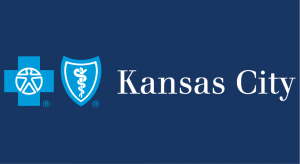
Blue Cross and Blue Shield of Kansas City, the area’s largest locally based health insurance provider, ser-ves roughly 1 million individual clients who may view the brand from a number of perspectives: Health insurance plans for individual clients, small and large employers (including health-savings account options), and people needing |supplemental Medicare plans, for starters. But beyond health insurance, BlueKC offers dental insurance, travel insurance, tools to manage prescription drug costs and find physicians. The brand has evolved considerably since the company’s founding in 1938 as Group Hospital Services, when it had just seven network hospitals, two employees and $3,025 in working capital. Celebrating its 80th year, this non-profit company serves nearly 60 hospitals in a 32-county area, has more than 900 employees and generates nearly $2.9 billion in annual revenues. As a non-profit company, Blue Cross Blue Shield of Kansas City strives to embrace new ideas to make healthcare more affordable, to improve the customer experience, and to develop new products that promote customer choice.
 Burns & McDonnell
Burns & McDonnellFurther proof that no two companies’ branding challenges are alike, Burns & McDonnell deals with clients at a much different level as an international engineering firm. Technology and messaging are tools, but the heavy lifting is done, says Melissa Lavin-Hickey, on another plane altogether. “Relationships continue to serve as the foundational driver to purchase decisions, while innovative solutions that generate a cost-benefit provide added value to the customers,” says the firm’s director of corporate marketing. Burns & McDonelll, now among the region’s biggest private employers, has always maintained a customer-centric approach to achieving sales and marketing satisfaction, Lavin says. “We have a customer-first mentality and design our content-marketing strategy to make our customers smarter. If we can make our customers better, faster and smarter, we have succeeded.” To do that, the firm draws on multichannel techniques that, she says, “provide content that doesn’t interrupt, but simply provides better information. We value our high-tech-touch approach that never overvalues technology or undervalues relationships; because at the end of the day, relationships are what matter the most.”
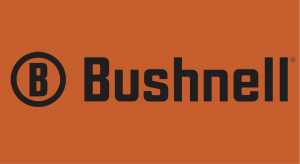
It’s a pretty safe bet that hunters in the two-state region know the Bushnell brand. With their assistance and loyalty, the company stomps an estimated $2 billion footprint into the regional economy, given the ripple effect that those outdoor sporting enthusiasts produce every year—$400 million in Kansas, and four times that much in Missouri. From its simple beginnings in 1948, when David Bushnell started importing Japanese-made binoculars to the United States, the company has become a signature brand for field glasses, rifle and spotting scopes, laser range finders, trail cameras, night vision and GPS systems and much more. Yes, folks, hunting has gone high-tech. The company incorporated in Delaware in 1980 as Worldwide Sports & Recreation, then moved in to Kansas in 1999, changed the brand to Bushnell Performance Optics in 2001, and again to Bushnell, Inc. in 2005. Now a subsidiary of Vista Outdoor, the company produces more than three dozen separate brands of products, and its Bushnell Outdoor Products division operates a 220,000-square-foot distribution center in Olathe.
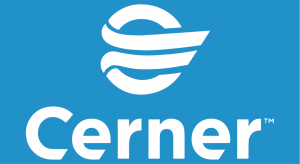
Back in its corporate adolescence, Cerner was like the man behind the health-care provider curtain, pulling levers to help hospital systems improve care with better informatics. Today, the better analogy might be that Cerner is the lever, having moved much closer to consumers through its population-health initiatives—a move fraught with brand implications. “A health journey is all about changing behavior, and to truly change behavior, you must have a deep relationship with your consumer,” says Melissa Hendricks, vice president of marketing strategy. “Ultimately, your brand is your lever for building that relationship, and digital transformation is a key driver for creating brand affinity with consumers.” That is happening, she says, “in the most exciting time in the history of health care, where technology is rapidly evolving to suit the needs of modern consumers.” As a brand, she says “we’re challenging ourselves to think the same ways we’re challenging our clients to think. It’s no longer about business-to-business marketing, but business-to-consumer. We need to know our clients’ business and know them on a more personal level to tailor our marketing to meet their needs and expectations.”
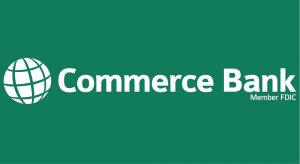
If you look at the FDIC statistics, it’s pretty clear to see that the Commerce Bank brand resonates with consumers in the two-state area. With more than $19 billion in deposits in the two-state region (the vast majority of its $20.6 billion in deposits overall), Commerce is the largest bank headquartered in Missouri, and very nearly the largest overall, even going head to head with national banks. The bank has built its brand on maintaining a relationship-based lending structure with borrowers, even as Commerce Bank has climbed the industry rankings over the past decade. It prides itself on being consumer-friendly with its range of remote-banking products, its extended business hours to accommodate commercial and individual clients, and its 155 locations in Missouri and Kansas. Generally speaking, if you can’t find a Commerce Bank location nearby, you’re probably not looking very hard. Billing itself as a super-community bank, it declares that “our customers are at the center of all that we do.”

The newest brand in this year’s Top Brands is actually a brand behind the brands: Dairy Farmers of America, founded in 1998, is a national cooperative and global dairy foods company with more than 13,000 owner members and 42 plants nationwide. The product line includes milk (naturally enough) cheese, butter, ice cream, dairy ingredients and milk powders that connect with regional brands such as Borden Cheese, Plugra Butter and Kemps. But the mark of DFA stands for more than dairy products, the company says: It stands for America’s hard-working farmers plus “their families and their futures, our partners and their reputations, and our leadership in the dairy industry. Because what ultimately sets DFA apart are its people, their passion and their ideas.” The Cooperative also represents a commitment to being careful stewards of the land and animals, the company says, as well as a commitment to safe, quality products made ethically and sustainably. More locally, for Wyandotte County, it represents the ability to attract corporate citizens: DFA, a company with $14 billion in annual revenues, opened its new headquarters in Kansas City, Kan., last year.
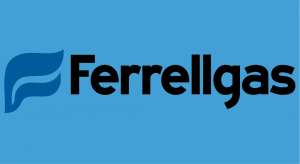
When you’re the nation’s second largest propane retailer, there’s a lot more room for movement on the downside than on the upside. That’s just one reason why Ferrellgas defends its brand by putting consumers at the heart of its operations. “The Age of the Consumer is one of those things you don’t have to believe in to be affected by, and it has changed or is changing almost everything about how Ferrellgas markets,” says Jim Saladin, the top marketing executive for the Overland Park company. Centering the marketing efforts on Ferrellgas consumers means “reminding them that we fuel what’s important to them,” Saladin says. “Generating excitement for something like propane is incredibly difficult: There’s a lot of noise in the space around whose service is best, and if you market on price, it’s a race to the bottom in that someone will always undercut you.” Ferrellgas, then, has shifted the conversation, he says, “to remind our customers and potential customers that we’re invested in them and their communities—what matters to them.”
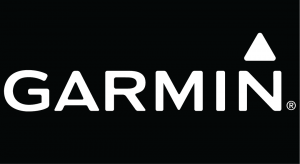
“Today’s consumers remain brand-loyal,” says Garmin vice president Brian Brooker—with just one teensy-weensy catch: “That loyalty is dependent on a company that consistently delivers a superior product. Garmin is deeply rooted in innovation. It’s vital that our product offering always reflects changing demand,” Brooker says. And sure enough, innovation has long been a pillar for the Olathe company, which made its mark with GPS technology throughout the 1990s, but is just as well-known today for wearable and fitness-related tech tools. As the technology changes the way connections are made, he says, it “will tell us more about our customers than ever before. The level of specificity revealed will lead to incredible insights and breakthroughs. The more we know, the better we can create products and experiences that satisfy their wants and needs.” Ted Gartner, director of corporate communications, says Garmin has made a major shift in the way it reaches customers, with digital and social platforms taking larger strategic roles. “Much of our messaging is more targeted to specific consumer segments,” he says. “It’s a way for us to meet the customer where they are.”
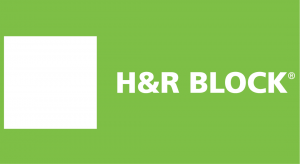
It doesn’t get any more mission-critical than this: “Everything we do,” says H&R Block’s Kelli Ramey, “is about getting consumers to choose our brand and believe H&R Block can meet their needs.” The firm’s vice president of advertising and creative services, Ramey notes that while many brands struggle with being trusted or becoming well known, “H&R Block is a household name with strong heritage, so our focus is on how to differentiate, innovate and build relevance rather than building awareness.” Since tax considerations are once-a-year events for most people, she says, the company has fewer opportunities to get it right with consumers, whose tax needs are hugely diverse. To address that, Ramey says, “we’re working to ensure consumers have choices to tackle taxes when and how it makes sense for them.” That invariably means keeping up on technology to improve both client experience and the products offered, as with use of augmented intelligence to identify additional credits and deductions for clients, or new virtual tax-prep solutions that bring personalized expertise to their fingertips. “Technology is also helping us get smarter and smarter about the way we communicate with consumers,” Ramey says.
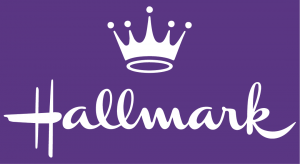
A lot of business models were rendered irrelevant by the digital age. The creation of greeting cards is not among them. “Overall, it still very stable—6.5 billion cards are sent every year,” says Lindsey Roy, chief marketing officer for the greetings division at Hallmark, and a great many of those bear the stamp of her employer. “That said, we know consumers’ lives are changing and we need to change with them,” she says. Among multiple strategic brand initiatives, Hallmark is leveraging tech breakthroughs to reach the so-called digital natives, with impressive results. Millennials, she says, “are amazed at the feedback they get when they send or get a card, because the experience is so different from a digital connection. We hear this all the time.” Promoting the brand means understanding how people connect these days and launching new product lines to capitalize on those interactions. “Five or 10 years ago, companies thought about digital disruption, but we’ve pivoted to embrace it,” Roy says. “There is a lot of new technology enabling us to be precise and personalized with our product innovation.”
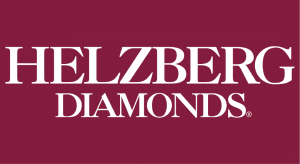
Every marketer hears that the consumer is in control, but that looks different from one brand to another. For Helzberg Diamonds, says Ellen Junger, chief marketing officer, “the consumer, when making a more considered purchase, wants to know about the company and people behind it—and they can find it out.” Just as every college student knows that ill-advised posts live on-line forever, companies must respect that dynamic, too, and the power of social media. “So for us, that sense as a values-based business, that rich history, the values established by the Helzberg family and now with Berkshire-Hathaway—if we’re not true to those, it’s very transparent to the consumer,” Junger says. While the printed image of a glistening diamond will always retain its eye-catching appeal, Junger says, the reality is that the consumer experience today starts with mobile, and companies need to embrace that in a multichannel approach. And that can be tough when every company, in a sense, is a digital-data-tech company: “We continue to have our own competitive set,” Junger says, “but the expectation and ease and experience are set by Amazon and Uber. That’s where the consumer starts.”
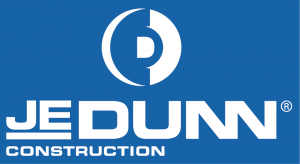
Contracting, not retailing, is no exemption from changes in the world of branding. “The increased availability of information, the ease of availability, and the amount of choice has empowered consumers like never before,” says Emily Fors, vice president of communications. “In general contracting, we are seeing a major shift away from commodity buying of building services to companies and organizations wanting to hire a true business partner.” Because that potential client is able to research business partners so thoroughly, she says, “they are more empowered to select a partner based on factors outside of the traditional ones such as fee, timeline, etc. They can now be armed with information such as past track records of success, client testimonials and references, reputation, risk management, and so many more that are equally if not more important than some of the traditional selection measures.” JE Dunn has a huge brand footprint in Kansas City, but with nearly 20 other offices nationwide, the challenge now requires digital tools to reach far and wide. And Fors anticipates the need for more of the same. “Technology,” she said, “is at the heart of how consumers will start researching a brand and getting familiar with that company’s vision, culture, and track record of success.”
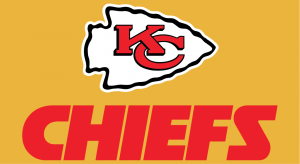
When you see the candy-apple red lettering and the jagged outline of an arrowhead, the image can only convey one thing: The Kansas City Chiefs. But that brand has woven into it a lot of threads: Head-splitting fan noise. Unmatched tailgating. Over-the-top game-day regalia. And in recent years, at least, a regular dose of regular-seasons success, though, regrettably, being on the outside looking in on Super Bowl Sunday. Perhaps the latter may change as the brand takes on a new aspect this year: the team of Young Guns. With a new quarterback, the 2017 NFL rushing leader (then a rookie) at running back, the Fastest Man in Football on offense and kick returns, the team is poised to find a new identity on offense. And with some major-name departures on defense, it will have a new image there, too. Will this be a reload or a rebuild for Coach Andy Reid? The answer to that will determine how shiny the brand emerges after the 2018 season. But for the record, the next Super Bowl will be played on Feb. 3, 2019.

The best example of a major brand undergoing a metamorphosis is developing right here in this region, right now. With the staff of the Kansas Corporation Commission having signed off on a planned merger of Westar Energy and Great Plains Energy (parent of Kansas City Power & Light), a new brand will soon be born—assuming the three members of the KCC board also give their blessing to this marriage at their hearings in the spring. We don’t know yet what the brand will be—for the time being, and for regulatory purposes, Monarch Energy has been employed as a working title—but we can expect to see the new moniker by year’s end, if all the hurdles are jumped. Whatever it is, it will stand for a company serving a combined 1.6 million customers in Missouri and Kansas, revenues of nearly $6 billion, more than 5,000 employees and a whopping 13,000 megawatts of generating capacity. The headquarters of the new company will remain in Kansas City, Mo., with Topeka retaining a significant share of the current Westar employment there.
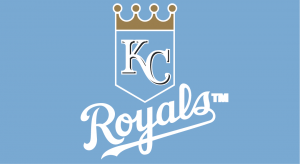
It’s hard enough for a pro baseball team to maintain brand perception when the on-field product can change with a simple roster move. Then, add the consumer piece. For the Kansas City Royals, technology is a big-time branding ally. The team’s CRM platform allows executives to better understand audience segments and develop varied promotional strategies, says Mike Bucek, vice president of marketing. “We tailor our approach differently for segments of our fan base through promotions and themed ticket-package offerings,” he says, so giveaways, theme nights, experiential events and ticket plans are all designed to meet fan demands. “We also offer several different options for ticket delivery, so fans can access, use and share our tickets in several ways,” he says. “Technological advances provide us with insight into our fanbase like never before,” Bucek says, and have elevated the focus on the fan experience across the organization. Case in point: social media. “It’s become a powerful tool, allowing us to respond to both positive and negative feedback,” Bucek says. “Monitoring social media platforms allows us to address issues quickly, sometimes within minutes.”
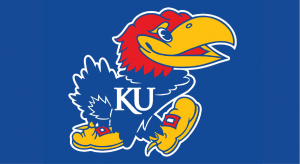
Most organizations have a singular mission, which helps executives define brand strategies. But how to address the concept of branding when yours stands for research, service to the state and the world, instruction, collegiate basketball played at the highest levels. That’s the challenge for executives at the University of Kansas, whose name—even though it no longer has a structural connection—is affixed to the Kansas City region’s No. 1 acute-care hospital. “The Jayhawk, the crimson and blue, and the KU signature all express KU pride and tradition,” the university declares. “The brand itself is intangible, an idea in the minds of our community and our audience.” As summarized on the university’s Web site, support for the brand comes from presenting KU as a caring and inclusive community, from reflecting the university’s energy and tradition, and from invoking KU’s brand promise: Give rise to greatness. And as the higher-ed institution with the largest enrollment in the state (28,447), it’s clear the brand is connecting with parents as well as students.
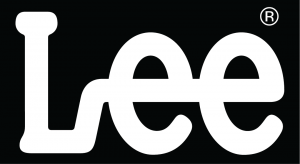
Yes, consumers have better tools today, and access to more information, than at any time in history. But the savvy clothier isn’t exactly empty-handed in that arena. At Lee Jeans, says brand manager Heather Caldwell, “we have been able to leverage the capabilities of our Web site and social media to consistently stay in touch with our consumer. On-line reviews help show what’s working well, while social-media engagement gives us a great daily read.” But more than that, the Merriam-based company turns insight data into new product lines that extend the brand into a new generation. Take the athleisure trend, which Caldwell says has dominated the industry for a few years. Tapping into that, she says, the company introduced products for men and women with no-bind waistbands and fabric that moves with them while retaining its shape. “Having a nod to vintage styles from the ’50s to the ’90s is a newer consumer trend,” she says, and in response, Lee launched its 101 and Vintage Modern collections to highlight its 125-year heritage. “New brand videos and snapshots with our designers go behind the scenes to show what it takes to craft these authentic denim pieces,” she says. “Those videos are promoted via our Web site’s blog and social-media platforms to targeted specific consumers.”
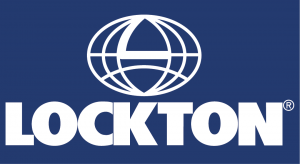
There’s no getting around it, says Marshall Lockton: “Business-to-business brands like Lockton have to think more like consumer brands” in this age. The insurance brokerage’s senior vice president for operations. “As Lockton grows, our brand impacts our ability to keep adding clients and recruit great people. We want to be known as a thriving, dynamic company that is a great place to do business.” Most of the firm’s clients are not experts in risk, employee benefits and retirement plans, he said, “so we focus on connecting our clients’ business goals into a risk management and benefits plan that works for them. We have to keep getting better on how we tell that simple story and expand it so people continue to want to work for us and be our clients.” Relationships have been the foundation for the company’s rise from a one-man show in the 1960s to a billion-dollar-plus global concern, he said, but often, clients “want to know about the broader company and what it is doing and what it stands for. We are all awash in information, so getting your story or message into the hands of a prospective client is tougher than ever.” Social media platforms and Mylo, the firm’s online insurance platform for small businesses and consumers, are two ways to do that, he said.
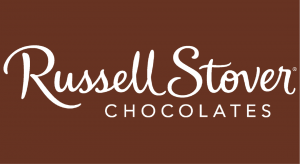
It started 95 years ago in Russell and Clara Stover’s bungalow home in Denver; it became part of a Swiss-based global enterprise four years ago when Lindt & Sprüngli acquired the company. But make no mistake: In the intervening years, the Russell Stover brand became woven deep into the commercial fabric of Kansas City. It remains there today, thanks to the $4.1 billion parent’s retention of Russell Stover’s long-time corporate presence at 49th and Oak near the Country Club Plaza. The brand has long been known for high-quality confections made by hand in small batches. That isn’t changing. In addition to its traditional line of chocolates, candy bars, jelly beans and hard candies, the company added to its consumer appeal in recent years by launching new product lines for three of the biggest chocolate-splurging days of the year—Christmas, Easter and Valentine’s Day. That’s on the product side; on the consumer-access side, it has ramped up on-line advertising and grown its social media presence to both promote interest in the brand and strengthen its points of consumer contact.
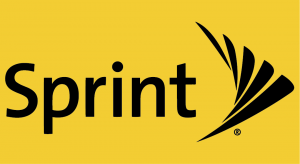
It was a tough year for the Sprint brand in 2017: stock analysts weren’t very kind, product-ranking sites and publications were even less-so, a potential merger with T-Mobile fell apart in November, and the stock price dropped from a 2017 peak of $9.07 a share in May to $5.89 at year-end. So brand perceptions will vary, depending on who is being asked—analyst, investor or customer. But the Overland Park wireless carrier isn’t taking any of that lying down. Nor should it: Among the companies supposedly outranking Sprint were several mobile virtual network operators whose cellular service is delivered over . . . Sprint’s network. And as the company works toward optimizing that network and preparing for the capital expenditure needed to roll out 5G coverage, it is well into a $6 billion upgrade, a project that will extend into mid-2019. The brand still had enough carrying power to attract a new president in January—Michel Combes, the French telecom and cable executive who helped turn Altice, NV into one of the largest cable operators in the United States.

At UMB, the traditional model of building products or offering services, then finding customers, doesn’t fly. “We build relationships with our clients, listen to their needs, and then build products to help them further their businesses,” says Heather Miller, executive vice president of sales, marketing and communication. “We have, by design, built our organization to be very different than our peer group. We monitor trends, but we also take a long-term look and factor in relevant changes as we plan our customer strategies.” That means looking at brand promotion differently. “We have the same traditional, promotional channels as everyone else,” Miller says, “but we also invest in being good citizens in the communities in which we live and work.” By being active and invested that way, she says, “you sense the changes, and can understand the underlying needs in a more meaningful way. We believe being close to the customer, particularly as their expectations evolve, not only allows us to be nimble in adapting to their needs, but also provides us the best ROI.” Thusly grounded, UMB officials don’t lose sleep over emerging technology trends. “Every day,” Miller says, “our associates strive to be more understanding, more compassionate, and more helpful with each person they assist. Technology can solve for many things—but it can’t replace that.”
To determine this year’s top brands, Ingram’s looked at their advertising budgets, revenues, employment and other factors, studied their approaches to present-day marketing, and scored them for their influence. We ran that through an editorial committee with more than 80 years of combined experience covering business, commerce and everyday life in the Kansas City region, mixed in a touch of judgment, and set the field. Did we miss anybody? If so, let us know.